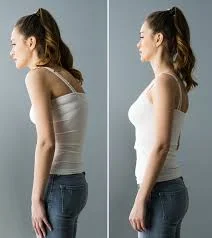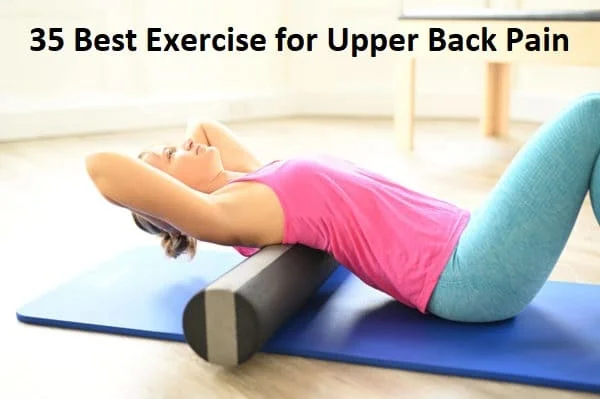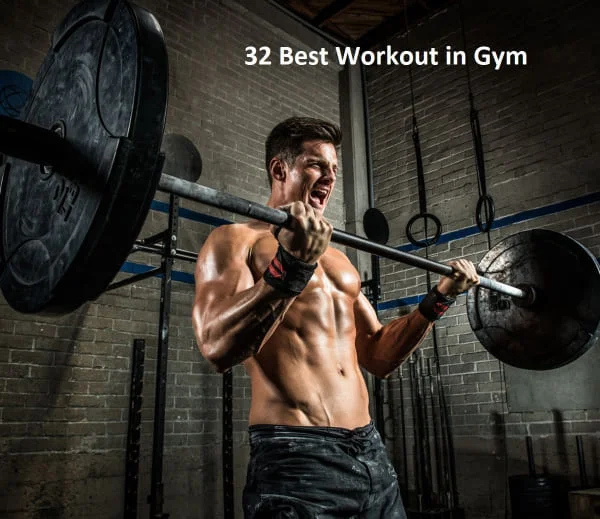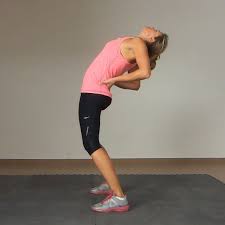19 Best Exercises for Good Posture
It’s critical to maintain good posture for general health and well-being. Poor posture can lead to various musculoskeletal issues and discomfort. Incorporating targeted exercises into your routine can help strengthen the muscles that support proper posture.
In this guide, we’ll explore a range of exercises designed to enhance posture, focusing on key muscle groups such as the core, back, and shoulders. By consistently practicing these exercises, you can improve your posture, reduce the risk of pain or injury, and promote a more confident and upright stance in your daily life.
Table of Contents
Definition of Posture
Posture is the attitude assumed by the body either with support during muscular inactivity, or utilizing coordination action of many muscles working to maintain stability or form an essential basis that is being adapted constantly to the movement that is superimposed upon it.
Which causes affect the posture?
- Muscle weakness
- Muscle Tightness
- Any Deformity
- Injury and Guarding
- Kyphosis.
- Scoliosis
- Anterior Pelvic Tilt
- Forward Head Posture
- Rounded Shoulder
- Uneven Hips
- Any Other Condition
What Is the Importance of Good Posture?
Knowing how to correct your posture is the first step towards better long-term health. Good posture aids in the development of balance, strength, and flexibility. Proper posture will result in increased energy and decreased muscle pain.
You will become more aware of your body as you improve your posture. It is easier to correct your posture when you practice good posture. It is a habit that becomes easier with time.
Exercises for Posture Correction
Bad posture is harmful to your body and causes aches and pains. It can also make you appear tired, unhealthy, and uncomfortable. Additionally, poor posture may be a contributing factor to your pain. You can manage your pain and improve your posture by performing the proper exercises.
The best exercises for improving posture concentrate on strengthening your core muscles. This includes the muscles in your abdomen and lower back.
Making posture correction exercises a daily habit will help to strengthen your muscles and improve your posture. The more good posture you practice, the better you will feel. You will notice improvements in your health and appearance as well.
Posture Stretch
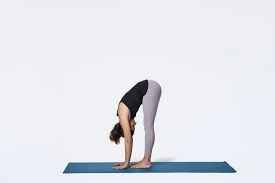
You can relax your hamstrings, glutes, and spine by performing this standing stretch. It stretches your legs and hips as well.
To execute this pose:
Your heels should be slightly apart as you stand with your big toes in contact.
Fold forward at the hips while bringing your hands to your hips.
Place your hands on a block or let them fall to the ground. Go as far as you can without worrying if your hands don’t touch the ground.
Allow your spine to lengthen by bending your knees just a little bit and softening your hips.
Allow your head to fall heavily to the floor while tucking your chin into your chest.
Hold this position for up to a minute.
Shoulder Blade Squeeze
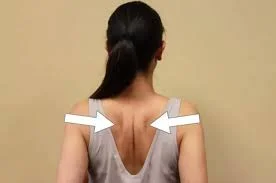
Maintaining good posture requires activating the muscles in your upper mid-back. We often allow these muscles to become lazy when we are confined to a seated position for an extended period. You can keep these muscles reminded of what they need to do to maintain good posture by performing this physiotherapy exercise.
A physiotherapy exercise is used to activate the mid-back muscles to cue the body to use proper posture when sitting or standing.
This physio exercise is performed as follows:
Sit or stand tall in your chair.
Consider a pencil stuck in the middle of your back that you do not want to fall to the ground.
Squeeze your shoulder blades together back and forth.
Relax after five seconds of holding. fifteen times. Please remember to relax and try again if you feel like your shoulders are edging closer to your ears.
Isometric Pulls
Isometric pulls strengthen your shoulder, arm, and back muscles, allowing you to maintain good posture.
To complete this exercise, follow these steps:
Sit in a soft-backed chair.
Make a fist with each hand and extend your arms out in front of you, parallel to the floor.
Exhale as you squeeze your shoulder blades together and draw your elbows back towards your shoulders.
maintain this position for 10 seconds, breathing deeply.
carefully exhale and return to the starting position.
Repeat this motion for one minute.
Forearm stretch
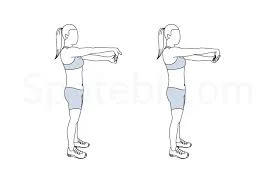
Repetitive work, such as typing or using a mouse for long periods, can cause tightness in the tops and bottoms of your forearms. Keeping these muscles limber can help protect against injuries like tennis elbow and carpal tunnel syndrome
This exercise is performed as follows:
Stretch one arm straight out in forward of you.
Bend your wrist towards the ground.
Pull the stretched arm’s hand back down towards the body with the other hand.
When they feel a pull along the top of the forearm, comes to a halt.
Hold for a total of 20 seconds.
Rep by extending the same arm straight ahead and bending the wrist upwards towards the sky.
Pull the extended arm’s hand up and back against the body with the other hand.
When you sense a pull at the base of your forearm, stop.
a second time.
Upper trepezius stretch
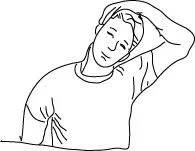
Stretch in the middle scalene
This will stretch out the neck and upper back muscles (Scalene and Upper Trapezius), which can become extremely tight in people with forward neck syndrome.
This exercise is performed as follows:
starting in a sitting or standing position
Tuck one of your hands behind your back and one on the opposite side of your head.
Bring your head down to your shoulder.
To get a deeper stretch, use the hand on top to press your head down (not too hard).
Hold for 20-30 seconds on each side.
Cat-Cow Stretch
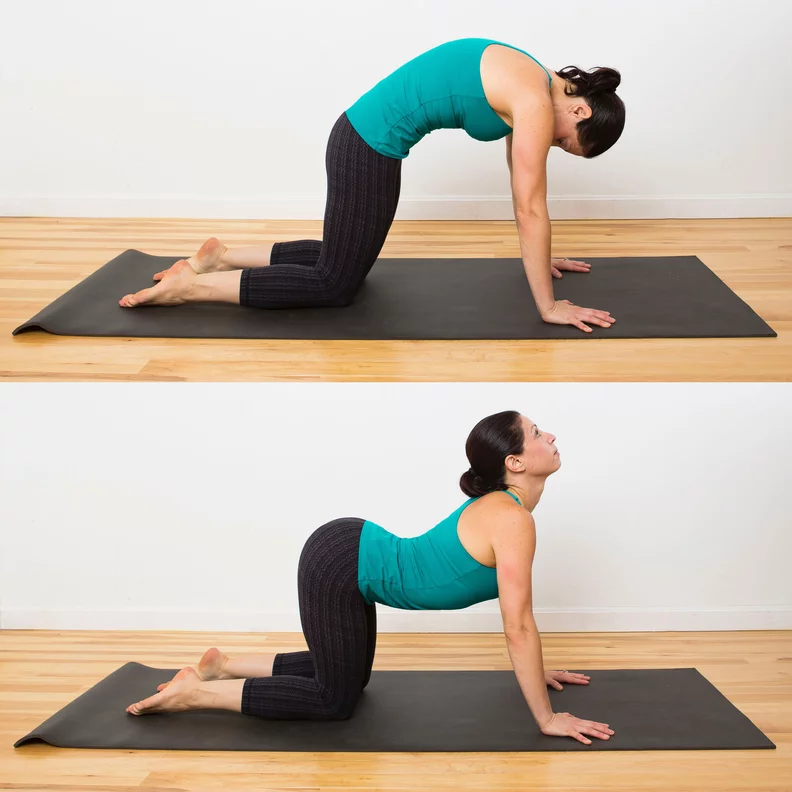
The cat-cow stretch is a yoga-inspired exercise that improves posture by increasing spine flexibility and mobility. This exercise involves moving through two poses in a flowing motion: the cat pose and the cow pose. It’s an excellent exercise for anyone looking to improve their spinal health and reduce back tension.
What is the Cat-Cow Stretch Exercise?
Here’s how to do the cat-cow stretch exercise step by step:
Starting on the hands and knees, with the wrists under your shoulders and the knees under your hips.
The cow pose is achieved by lifting your tailbone towards the ceiling, arching your back, and letting your head hang down towards the floor as you inhale.
Tuck your chin to your chest, round your spine towards the ceiling, and bring your belly button to your spine as you exhale – this is the cat pose.
Continue to alternate between the cow and cat poses, inhaling as you enter the cow pose and exhaling as you exit the cat pose.
Perform two to three sets of ten to fifteen repetitions of this exercise, with a brief break in between.
Precautions: Alternate between the two poses slowly and smoothly, and avoid forcing your body into any uncomfortable positions
Standing Cat-Cow
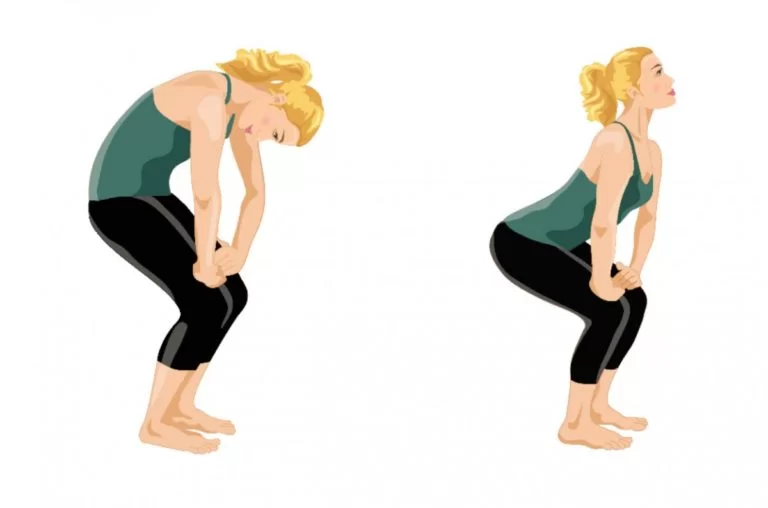
This standing position, which is a modification of the standard Cat-Cow, helps in releasing tension in your back, hips, and glutes.
To execute this pose:
With your knees slightly bent, stand with your feet about hip-width apart.
Put your hands on your thighs or extend them out in front of you. Round your spine, bring your chin to your chest, and lengthen your neck.
Then lift your chest, turn your spine the other way, and look up.
Five breaths should be held in each position.
For a few minutes, continue to move in this pattern.
Glutes Bridge
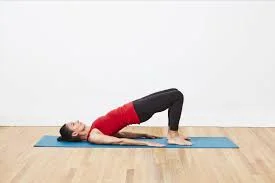
The glute bridge is a simple exercise that strengthens the muscles in the lower back, glutes, and hips, thereby improving posture. This exercise involves lifting the hips off the ground while squeezing the glutes and can be modified to accommodate various fitness levels. It’s an excellent workout for anyone who wants to improve their posture and core stability.
How do you do the glute bridge exercise?
Lie on your back, arms at your sides, knees bent, and feet flat on the ground.
Engage your core and glutes, then lift your hips to the ceiling while keeping your shoulders and feet flat on the ground.
Squeeze your glutes at the top of the movement and hold the position for 1-2 seconds.
back to the hip’s starting position by lowering them slowly.
Repeat for two or three sets of 10-15 reps.
Precautions: Throughout the exercise, keep your feet flat on the ground and refrain from pushing up onto your toes. As you lift your hips, maintain a strong core and avoid arching your lower back
Child pose stretch

The child’s pose lengthens and stretches the spine, glutes, and hamstrings. It may also help to relax your lower back and neck.
To perform this pose:
Sit on your shins, knees touching, big toes touching, and heels splayed out to the side.
Fold forward at the hips and extend your hands in front of you.
Return your hips to their original position, towards your feet. If the thighs can’t go all the way down, support them with a pillow or folded blanket.
Place your brow gently on the floor or turn your head to one side.
Keep your arms extended or parallel to your body.
Deep breaths into the back of your rib cage and waist.
For up to five minutes, unwind in this position while continuing to inhale deeply.
Thoracic rotation with a hip hinge
Place your feet hip-width apart. Keeping your knees bent, hinge forward from your hips until your torso is nearly parallel to the floor (imagine sending your hips back as you swing your torso forward). Check that your abdominals are elevated and engaged and that your neck is aligned with your spine. Place your hands on your shins or straight down in front of you.
Inhale deeply and rotate to the right, opening your chest and bringing your right arm straight up toward the ceiling (as if painting a semicircle in the air to your right). Instead of tilting or using your hips excessively, focus on softly twisting from the centre of your back (your thoracic spine). Exhale and bring your right arm back to the centre. Continue to alternate sides five to eight times each, starting on the left side.
Pet bird
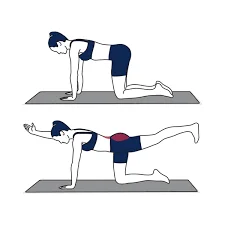
This is an excellent exercise for strengthening the core and lumbar back muscles
How to Go About It: Start on your hands and knees, with your hands under your shoulders and your knees under your hips.Before initiating any movement, brace (contract) your core as tightly as you can. Raise your left arm and reach it forward until it is aligned with your chest while kicking your right leg backwards until it is aligned with your torso. It’s critical not to arch your lower back when doing this. Hold for 2-3 seconds before gradually returning to the beginning position. Rep using your left arm and right leg. Repeat 10 times on each side.
Avoid arching your lower back and just extend your arm and leg as far as is comfortable
Downward facing dog
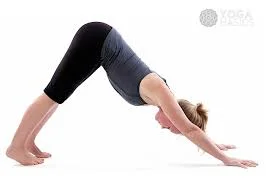
Downward-Facing Dog is a forward bend that may be utilized to balance the body as a resting position. It can help ease back discomfort while also strengthening and straightening the muscles in your back
.To perform this pose:
lying on your stomach, press onto your hands while tucking your toes beneath your feet and lifting your heels.
Raise your knees and hips to raise your sitting bones to the ceiling.
Slightly bend the knees and stretch the spine.
Tuck the chin into the chest or keep the ears in line with your upper arms.
Firmly grasp your hands and elevate your heels slightly.
Sustain this posture for a maximum of 60 seconds.
Pose of a pigeon
This hip-opening stance will help stretch your spine, hamstrings, and glutes. On all fours, place your knees beneath your hips and your hands slightly in front of your shoulders.
With your right foot slanted out to the left, bend your right knee and position it behind your right wrist.
Place your right shin against the floor.
Put your left leg outstretched, your knee straight, and your thigh down on the ground.
Make sure your left leg is back and straight, not bent to the side.
With your arms out in front of you, carefully lower your body until it rests on your inner right leg.
For up to a minute, maintain this posture.
Lifting your body and moving your hands back over your hips can help you gradually escape the posture.
On the other side, repeat.
Plank
Why It’s Beneficial: This exercise works the obliques and transverse abdominal muscles, as well as the shoulder and back muscles.
Plank pose improves posture by strengthening the muscles in the shoulders, back, core, glutes, and hamstrings. It additionally supports proper spine alignment.
This exercise is great for strengthening your deep core as well as your gluteal muscles.
Starting Position: Start with your palms under your shoulders while on your hands and knees. Put oneself up like the top of a pushup by raising both legs straight behind you with the toes tucked under. To avoid “swaying back,” tuck your stomach in and look at the ground.
The Exercise: Maintain a plank position until you become fatigued. Take a break, then repeat. To prevent your lower back from sagging as you exhale, keep your abdominals tight and raised.
Increase the difficulty by maintaining instead of utilizing your hands but your forearms.
Hold this position for 30-50 seconds
High plank
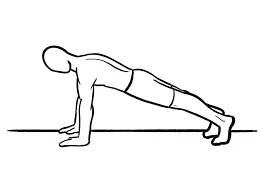
High planks assist in reducing pain and stiffness all across your body while also strengthening your shoulders, glutes, and hamstrings. They also contribute to the development of core and back strength, which is necessary for proper posture. To complete this activity
Follow these steps:
Align your legs, raise your heels, and bring your hips to all fours.
Align your back and tighten the muscles in your abdomen, arms, and legs.
Lean your head back, open your mouth wide, and look at the ground.
Maintain the chest open and your shoulders back.
Maintaining that position for at least a minute.
Side plank
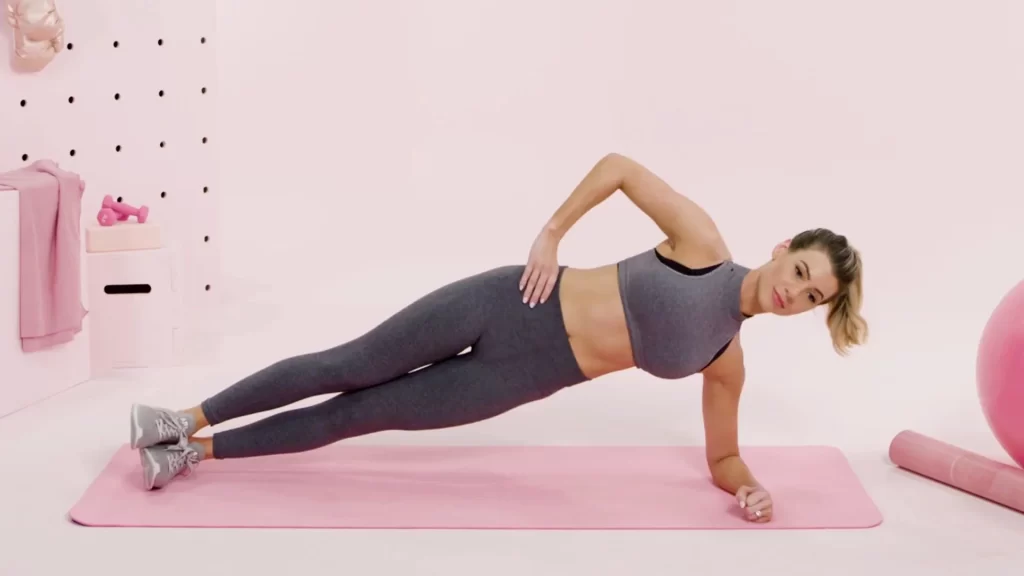
This exercise, a modification of the conventional plank, strengthens your sides and glutes. Your posture will improve and your back will be supported by strengthening and aligning these muscles.
To complete this activity:
Bring your right hand toward the centre while holding a high plank stance.
Lift your hips, stack your ankles, and shift your weight to your right hand.
Alternatively, reach your left hand up toward the ceiling or place it on your hip.
For further support, you might stoop your right knee to the ground.
As you hold this position, contract your glutes, side body, and abdominals.
From your head to your heels, position your body in a straight line.
Look straight ahead of you or up at your hand.
continue this position for up to 30 seconds.
Repeat on the other side.
Hip flexor stretch
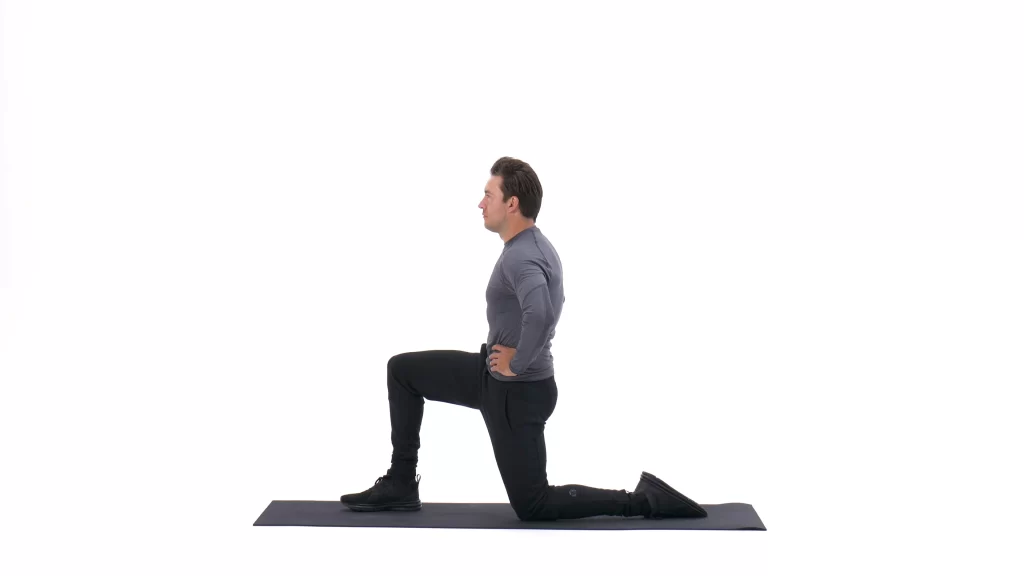
With anterior pelvic tilt, the hip flexors are frequently contracted, and this exercise helps to extend them.
How to perform it:
To start this stretch, kneel on a soft surface. starting your right leg forward, keeping it flat on the floor so that your knee is above your ankle. Keep the left knee bent at 90 degrees and in touch with the cushioned floor.
Brace your core and move your right foot forward a couple of inches slowly Move the hips anteriorly while contracting the right gluteal muscles. the left knee should be mildly bent past 90 degrees. For 10 seconds, maintain the final position. Perform this stretch on your stomach for 10 repetitions.
Half cobra pose
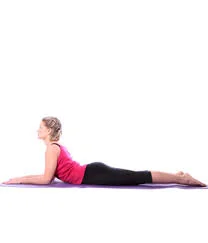
The Half Cobra position is excellent for stretching the lower back and reversing most people’s slouched shoulder posture.
How to Go About It:
Begin by laying on your stomach (prone position) and gradually raising yourself on your elbows while keeping your hips in touch with the floor.
Hold the prop-up posture for 10-15 seconds before returning to the prone (face down) position.
Gradually progress to 30 seconds of holding the terminal position. Set a goal of 10 repetitions of this stretch. At first, you may not be able to endure this posture very well, so begin gently and cautiously.
Wall angles
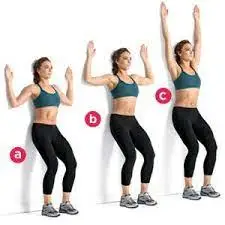
Wall angels are a straightforward and effective exercise for improving posture and alleviating upper back pain. This exercise requires you to stand with your back to a wall and move your arms up and down in a “snow angel” motion. It’s a great workout for anyone who spends a lot of time sitting or hunching over their computer.
How do you do the wall angels exercise? The following is a step-by-step procedure for performing a chest stretch exercise: Stand with your back to a flat wall, your feet about 6 inches apart, and your knees slightly.
Summary
Posture is the attitude of the body during inactivity or coordination of muscles working to maintain stability. Causes of posture include muscle weakness, tightness, deformity, injury, kyphosis, scoliosis, anterior pelvic tilt, forward head posture, rounded shoulder, uneven hips, and other conditions.
Posture stretch, shoulder-blade squeeze, isometric pulls, forearm stretch, upper trapezius stretch, and cat-cow stretch are all essential exercises for maintaining good posture. These exercises help relax muscles in the upper mid-back, strengthen shoulder, arm, and back muscles, and protect against injuries like tennis elbow and carpal tunnel syndrome.
Here are a few suggestions for having an ideal posture:
- Maintain your shoulders back and relaxed.
- Maintain your head up and your chin level to the ground.
- Engage your core muscles.
- Distribute your weight evenly over both feet.
- Avoid slouching or slumping over.
FAQs
Absolutely! By simultaneously working to strengthen weak muscles and loosen up tight ones, posture can be improved. Knowing which muscles to concentrate on is the trick. Exercises that typically involve a pulling motion, like rows, can be very beneficial for strengthening in repositioning the shoulders for better posture. Pulling exercises usually concentrate on the back muscles, which are prone to weakness in those with poor posture.
The combination of tight front muscles and a weak back contributes to a posture with shoulders that are more rounded forward. Do a back exercise every other day to keep your postural muscles strong. When stretching, make sure you are stretching your arms back in a corner or doorway to open up your chest.
Posture is extremely important! Over time, poor posture can lead to an imbalance of the muscles that keep your body upright. As overworked muscles tighten and underutilised muscles weaken, the body begins to adapt to normal movement, which can make you more prone to injury, increase headache frequency, reduce mobility, and increase pain, among other things.
When the skeleton is in the best possible position, you have good posture. The human skeleton serves as a vital framework for the body. The relationship of the skeletal parts to one another determines whether posture is good or bad. When the bony structures of the body are efficiently lined up and weight is distributed evenly from side to side, the body gains strength and flexibility.
A person with good posture moves better, has fewer aches and pains, and can participate in a variety of activities. Many parts of the musculoskeletal system improve when the body’s posture improves.
Texting, playing games, and using apps that require both hands on your phone can all have an impact on your posture. The amount of time you spend on your phone raises your chances of developing poor posture.
References
- Cronkleton, E. (2023, July 13). 12 Exercises to Improve Your Posture. Healthline. https://www.healthline.com/health/posture-exercises
- Hospitals, M., & Hospitals, M. (2023, June 22). 8 Best Posture Correction Exercises You Should Try Today. Manipal Hospitals. https://www.manipalhospitals.com/blog/8-best-posture-correction-exercises-you-should-try-today
- Turetsky, L. (2023, July 3). 10 Posture Correction Exercises – Upper & Lower Back. Back Intelligence. https://backintelligence.com/exercises-to-improve-posture/
- 11 Effective Exercises To Improve Your Posture In 30 Days. (2023, September 12). STYLECRAZE. https://www.stylecraze.com/articles/posture-exercises/
- Shoulder Blade Squeeze – Park Sports Physical Therapy. (2019, May 7). Park Sports Physical Therapy. https://parksportspt.com/2019/05/07/increasing-shoulder-range-of-motion-after-injury/shoulder-blade-squeeze/
- D. (2021, June 10). Wrist Stretch | Illustrated Exercise Guide. SPOTEBI. https://www.spotebi.com/exercise-guide/wrist-stretch/
- Taylor, R. B. (2011, July 10). 6 Exercises for Better Posture. WebMD. https://www.webmd.com/fitness-exercise/better-posture-exercises
- Eske, J. (2023, February 13). Exercises and tips for better posture. https://www.medicalnewstoday.com/articles/325883

